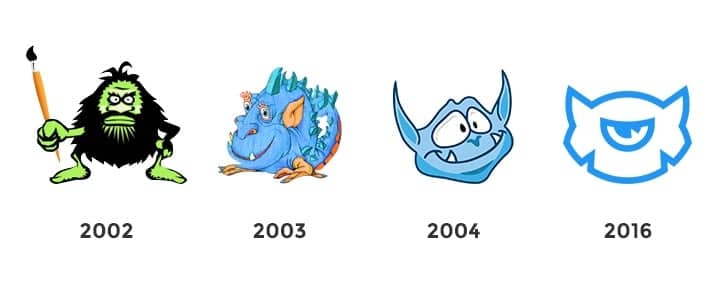David Braun Interview – CEO of TemplateMonster | CodeinWP
If you are in the website development business, you’ve probably stumbled upon a site called TemplateMonster.com. Maybe the blue monster-head logo rings a bell? It might have crossed your mind that the site is pretty big, but just how big? Let’s find out! Here’s my interview with David Braun – the CEO – plus a lot of interesting facts from TemplateMonster’s journey so far.
Let’s start on a high note:
The TemplateMonster marketplace now features 46,000 design templates for the most popular platforms, including WordPress and WooCommerce, Joomla, Magento, Drupal, and PrestaShop. Since it was founded in 2002, it has served more than 5 million customers, with 100k people visiting the site each day.
The business is run by a 35 year old CEO – David Braun – who has built a team of 427 people, and through everybody’s combined efforts reached $15M in revenue.
But the journey didn’t start like your typical Silicon Valley startup. Far from it…


In a nutshell: David Braun was a refugee of the 1990s Georgian war. He built TemplateMonster with the help of his team from Ukraine, while living in the US. For the last couple of years, David has been away from his business, assisting the Ukrainian Government in reforming the Ministry of Defense. The systems he has set up for the company allow it to operate independently even when he’s not around.
David has become a hero-like figure for me. I started to read more about him almost immediately after I first heard about all the things he was doing. There have been many turning points in David’s life, so interesting and intense that I wanted to understand things better. I grabbed his email. He replied within two hours.
Here’s my interview with David Braun and the story of TemplateMonster. Let’s start with the early days:
Mục Lục
David Braun Interview: How your becoming changes everything
David Braun, by his Georgian name David Arakhamia, had to leave his country at the age of 11 together with his family due to the war in Abkhazia. They moved to Ukraine, where David stayed until he finished his academic studies. This was the early beginning of the internet as we know it today, in 2001.
He was still in university when he met his American future co-founder who came to Ukraine looking for talent. He was looking for someone to take care of producing websites for US clients. The first job they got was a clone of the General Electric website, which was commissioned for $7,000 – a huge amount in those times.
The business started to flourish, they had new clients coming in, and the projects were being delivered on time. The process worked well, but could not be automated. Every project needed customized care, each customer had to be managed differently – the model couldn’t be scaled up fast enough.
Sometimes, the worst that can happen is the best
While working closely with his team, David Braun watched one of his designers at work, using a set of self-made tools to help him speed up the design process. That got David thinking. There was no one doing something like this successfully at that time, it was a concept that needed to be proven.
The designer had a passion for drawing monsters, he would draw them all the time. So they looked up the domain, and it was free. This is how TemplateMonster.com was born.


First week of operations? They sold $70,000 worth of PSD templates, just by promoting them in various online forums.
This sounds absolutely crazy for 2002. But … as it turned out, 90% of that money was fraud, coming from stolen credit cards. The bank closed down their account and none of the card processors would work with them anymore.
Over time, and with David’s intervention, things leveled off and the fraud levels dropped. In the same time, the team started screening every transaction, invalidating some, and eventually they cleared their accounts.
By the second year, the TemplateMonster turnover was about $300,000. They managed to build around 300 templates, and they were the only ones in the market without any real competition. All that money was reinvested and the business was standardized.
They divided the design process in order to replicate it faster – each designer was now in charge of one element, so they could mass produce. In 2003, they started doing Flash, which quickly become their main revenue stream.
This really shaped up the business, and they had to hire more Flash developers to create the designs. At its peak, TemplateMonster featured 20,000 Flash-based templates, and the business was thriving. 70% of the revenue was generated by Flash alone.


But as they say – good things don’t last forever.
In 2006, TemplateMonster was hit by an image rights lawsuit, estimated at $109M in damages. They were accused of selling website templates that included copyrighted photos. TemplateMonster surely did learn a hard lesson back then.
Here are David’s thoughts on image copyright issues in the WordPress community:
This is a VERY tricky part of the business. Most of the theme authors are using so called “free” images, licensed under Creative Commons license. But they do not realize that this license could be changed anytime by the author and they might be liable for up to $150,000 per infringement if someone changes the license in the future.
How does this work? (1) Someone uploads an image to Flickr that isn’t theirs. (2) You get it under what you think is CC. (3) Then the original copyright holder steps in and sues you.
There is no universal solution how to protect yourself from such cases, but as a precaution I would make at least a legally validated proof that the images was available under Creative Commons by the time you downloaded it. At least it gives you the chance to become an “innocent infringer” in a court of law.
Not enough trouble?
In 2010, Steve Jobs wrote an open letter putting the whole Flash industry down. Soon people stopped buying templates altogether, and sales dropped fast for the Flash-dependent TemplateMonster.
Again, David Braun was faced with external threats that were affecting the business. They were forced to switch to HTML, which meant starting from zero. They had no HTML templates, no one in the company was doing HTML. They couldn’t just fire everybody and hire new people – this would mean giving up all the work put into building a great team.
So they decided to train the Flash developers into HTML developers. This choice was not money-oriented, it was people-oriented. For one year, they stopped being profitable and lived off savings. This also coincided with making the transition to becoming a marketplace, and starting to accept external products on their platform.
The 2010 HTML disruption was a difficult one for the company, but it made David realize that they cannot go on without a solid business system in place that could protect them from future changes on the market. They started to restructure the business, define its values, and optimize (read automate) its processes.
This part is my favorite one, and I think it could be useful to many companies growing fast and being forced to expand. What these guys did is not a recipe for any business in need of reorganization, though, but it is an example of a model that proved its potential and delivered results.
Business restructuring, step by step
To start reorganizing the company, David needed to take a step back from the daily operations, free up his schedule and allocate some hours daily for systematizing the company. He also realized he cannot do this by himself and needed help.
Two of his managers were dispatched to specialize in business analytics. They dove into various processes, spent time with all the stakeholders, and started to draw up the map of the business:
- what is going on inside each department,
- how the decisions are taking place,
- what processes are duplicated,
- where the gaps are, etc.
A big challenge to reform the system had to do with the international nature of the operations. A company with several offices in different time zones and speaking different languages. And all these people had to be aligned to the same operational standards.
Our current staff is 427 people including contractors. Not a too fancy thing to manage so many people located in different time zones and speaking different languages, but this is what we have to do to stay in the business. I can’t imagine our life without the corporate portal that we use. It is called bitrix24.com, it contains all needed tools to run the company (chat, VoIP calls, CRM, light ERP, project management tools, forum, etc.).
Another major transformation for the company had to do with everyone sharing the same mindset. To do that, they used the Balanced Scorecard System, a management technique to align employees’ actions with the goals of the company. This implied one-on-one interviews, many Skype meetings and calls in order to reach a common vision.
As you might have noticed, David Braun likes to move fast. So in order to achieve a common vision for every single employee in the organization, they needed a shortcut.
They went for the leaders in the organization – people that have a greater influence on the others and that could spread the message directly. They used the DISC Personality profiling test in order to find these influencers who could then empower the rest of the team.
Five people were selected and trained. They set out to convey the message to the next ten people, who would then spread it to the next.
As a result, TemplateMonster has some very resounding rules for employees, chief of them:
Everything you are doing at work is YOURS. If you did something really good – people will feel proud of YOU. Did something bad – people will think bad about YOU.
You are not doing something just because someone pays you to do that. People spend at work at least the same amount of time as they do with their family (usually even more), so it is stupid not to be responsible with something you spend 1/3 of your adult lifetime on.
(…)
If you want to achieve something, stop sitting and thinking how smart you are, do something to execute your idea and impress everyone with something that works, not something that sounds like it will work.
Customer support – a new paradigm
The internal restructuring came with a new approach in the market.
All routine operations should be automated and people should focus on the creative part of their jobs. We are experimenting a lot with so-called “atomic design” concept, where the design consists of small parts (atoms) and match one to each other no matter in what order you place them together. You can read more about this concept from its creator.
I believe that if executed properly we could get a design generator that will produce designs, which could be extremely hard to recognize it is created by machine.
As for other non-creative tasks we already use a lot of automation (theme checkers, automated QA, load testing, product packaging, etc).
As the customer acquisition costs started to grow, they needed to find new ways to reach users. They had already tried and covered all the classic online marketing techniques.
An opportunity to improve things came from an unexpected direction – customer support. At that time, support was considered a liability, something that eats up time and money, not something that could bring in cash. So, once again, David Braun shifted the company’s vision and reinvented how they did things.
I remember we had a purely transactional business model, when people visit your site, buy the template and you forget about them and they forget about you. Nowadays, we cannot do it anymore.
First of all, because the customer acquisition costs almost double every year. Second, if you keep connections with your customers even after they complete the website based on the template, it opens a lot of opportunities for upselling and cross selling. You have to do whatever it takes to become a trusted source of advice for a customer.
If you are successful enough, the lifetime value can be doubled or even tripled without spending a lot on paid advertising. That is why we do invest heavily into customer support. Currently we do employ 65 people working 24/7 and are available via live chat.
20% of the revenue is spent on the support staff salaries, so their retention has become a priority. This shaped up the whole process of hiring new people, training them and keeping them engaged with their work.
This is how it’s done:
Instead of personnel research, interviews, and evaluations, new people get a one week “paid trial.” Every new employee is assigned with a mentor that prepares them for an exam. At the end of the week, if the person fails, the mentor gets summoned and the person is out.
Another exam takes place at the two-month mark (this happens for everyone actually, not only in the support department). The mentor walks the person through the specific processes, and teaches them everything they need to know. After this probation period, the person gets settled in and becomes a member of the team.
Each employee also gets their own KPIs (key performance indicators) that measure how effective they are on a daily basis. I mean, literally, at the end of each day, you get to see how well you’ve done, how productive your day was, and how this will influence your salary.
Support is now regarded as an acquisition channel. When people are happy with the help they’re getting, they recommend the service to their friends, it’s that easy. And it works. Support now drives around 25% of TemplateMonster’s revenue. This means around $750,000.
TemplateMonster and the WordPress community
WordPress, PrestaShop and Moto CMS are the most popular platforms on TemplateMonster, with WordPress adding up to 1800+ themes.
The business has changed a lot since TemplateMonster was a Flash-oriented template creator. Right now, it’s switching more and more towards a marketplace-only model. WordPress themes generate 30% of the revenue, making it a key part of the business.
I asked David if the WordPress community differs from the rest of TemplateMonster users in any way:
Honestly, we did not start well with the community initially. Being a commercial business, I could not understand the value and the messages that open source world sends to you. So, during the first five years being on the market, we sucked :). After visiting a couple of WordCamps, talking to smart people, seeing great business role models in the community we have changed our approach.
We’ve started to play an open role in the community, contributed a lot to WordPress development, released under GPL our central WordPress Framework (Cherry Framework), lots of plugins and themes. Looks like it pays back after some time. People notice you, respect your contributions and use your products.
WordPress has been a priority for TemplateMonster since 2011 (see the 10 year anniversary infographic), and David Braun has become one of the WordPress community figures.
Here’s the TemplateMonster team at WordCamp Kiev 2016:
How Our Colleagues from Ukraine Enjoyed @WordCampKyiv 2016 – the First Official #WordCamp in Ukraine pic.twitter.com/Ivcp1pdrIl
— TemplateMonster (@templatemonster) October 1, 2016
I never got to the part where David Braun stepped into the military and political arena in Ukraine to help out with modernizing the army. And that story is even more awesome than what he did with TemplateMonster. Maybe another time…
Now, I’d like to close up and thank David for his lightning-fast emails and for taking part in this whole thing!
If there’s anything you’d like to ask David, he’s promised he’ll join the comments and reply back. Thanks for reading!















![Toni Kroos là ai? [ sự thật về tiểu sử đầy đủ Toni Kroos ]](https://evbn.org/wp-content/uploads/New-Project-6635-1671934592.jpg)


